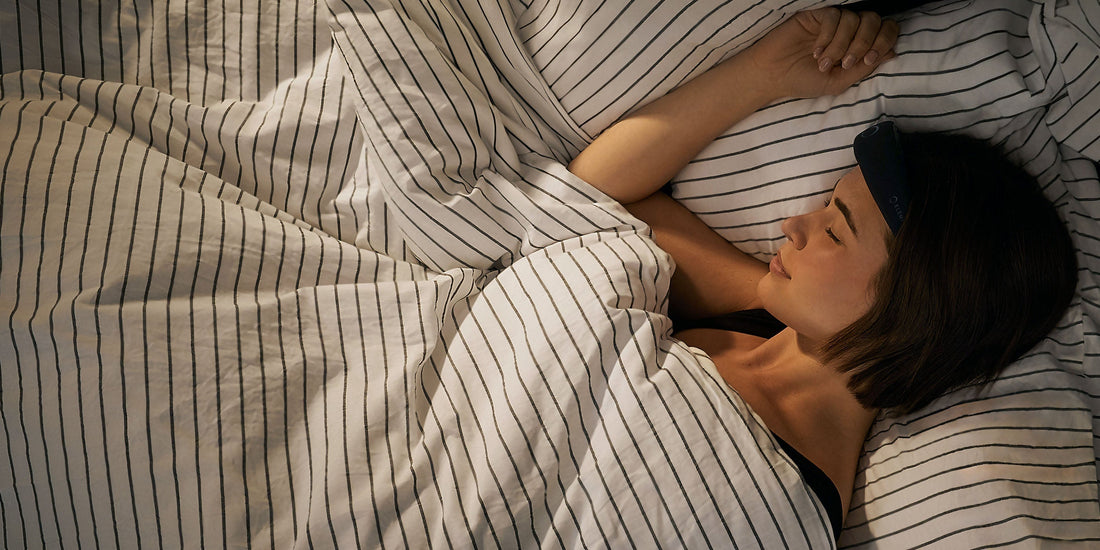by Jo McKinney
From my earliest days coping with monthly cycles to the sleepless stretches of pregnancy and early parenthood, and now menopause, I’ve experienced firsthand how a woman’s life stages can transform her nights. Each shift in hormones has shaped my sleep in surprising ways. These experiences inspired me to look deeper into the science behind why women’s sleep can feel so elusive and how we can reclaim some rest.
Biological differences in hormones, reproductive cycles, and societal expectations mean women can have unique sleep challenges. International Women’s Day is an opportune moment to highlight these differences and discuss science-backed ways to achieve healthy rest.
Biological & Hormonal Influences
Menstrual Cycle: Fluctuating progesterone and estrogen levels across the menstrual cycle can disrupt sleep. Many women report poorer quality sleep in the late luteal phase, often experiencing more restless nights or increased awakenings [1].
Pregnancy: Sleep disturbances are common in pregnancy due to hormonal changes, physical discomfort, and frequent urination. Studies show over half of pregnant women report significant insomnia symptoms [2].
Menopause: Declining estrogen during perimenopause and menopause is linked to sleep disturbances, including hot flashes and night sweats. This can fragment sleep, leading to daytime fatigue [3].
Unique Challenges Women Face
Greater Prevalence of Insomnia: Women are more likely than men to report insomnia, influenced partly by hormonal changes and possibly by stress or caregiving responsibilities [4].
Restless Legs Syndrome (RLS): RLS has been found to be more common in women, potentially linked to iron levels and hormonal fluctuations [5].
Societal/Environmental Factors: Women often juggle work, family, and domestic roles, leading to chronic sleep deprivation. Nighttime awakenings to care for children can further affect sleep quantity and quality.
Recommendations for Better Sleep
Over the years, I’ve experimented with different strategies—no screens in bed, a nightly bath, keeping a consistent bedtime, adjusting room temperature, supplements, and even cooling pajamas. Here’s what the science says:
Track Hormonal Cycles: Noting patterns across the menstrual cycle can help identify when sleep might be more disrupted. Adjust routines or bedtime in anticipation of challenging nights.
Consistency & Bedtime Routine: Keep a stable schedule. Incorporate relaxing activities, such as reading or mild stretching, to wind down.
Temperature Control: For menopause-related hot flashes, use breathable bedding, a fan, or keep the room cool. This can limit temperature spikes that disrupt sleep.
Nutrition & Supplements: Some evidence suggests that iron supplementation can alleviate Restless Legs Syndrome in those who are iron-deficient [6]. Consult a healthcare provider about personalized supplementation or dietary changes.
Mindfulness Techniques: Yoga, meditation, and stress management strategies can reduce anxiety and help stabilize mood, which benefits sleep across different life stages.
I’ve found that small lifestyle changes, grounded in both research and personal trial, can add up to significant relief. Women’s sleep merits attention due to all the changes from hormonal phases and life events like pregnancy and menopause.
Elemind’s wearable neurotechnology also works for me - a drug-free approach to improving sleep onset and restarting sleep in the middle of the night. A great option when hormonal shifts intensify sleep challenges and we just need a little extra help.
References
[1] Baker FC, Driver HS. “Circadian Rhythms, Sleep, and the Menstrual Cycle.” Sleep Med. 2007;8(6):613–622.
[2] Sedov ID, et al. “Insomnia Symptoms during Pregnancy.” Journal of Obstetrics and Gynaecology Canada. 2021;43(6):687–693.
[3] Kravitz HM, et al. “Sleep Difficulty in Women at Midlife: a Community Survey of Sleep and the Menopausal Transition.” Menopause. 2003;10(1):19–28.
[4] Zhang B, Wing YK. “Gender Differences in Insomnia.” Psychiatry Research. 2006;141(1):1–21.
[5] Ohayon MM, et al. “Prevalence and Risk Factors of Restless Legs Syndrome.” Archives of Internal Medicine. 2002;162(8):913–920.
[6] Trenkwalder C, et al. “Iron and the restless legs syndrome.” Movement Disorders. 2008;23(16):2265–2272.


